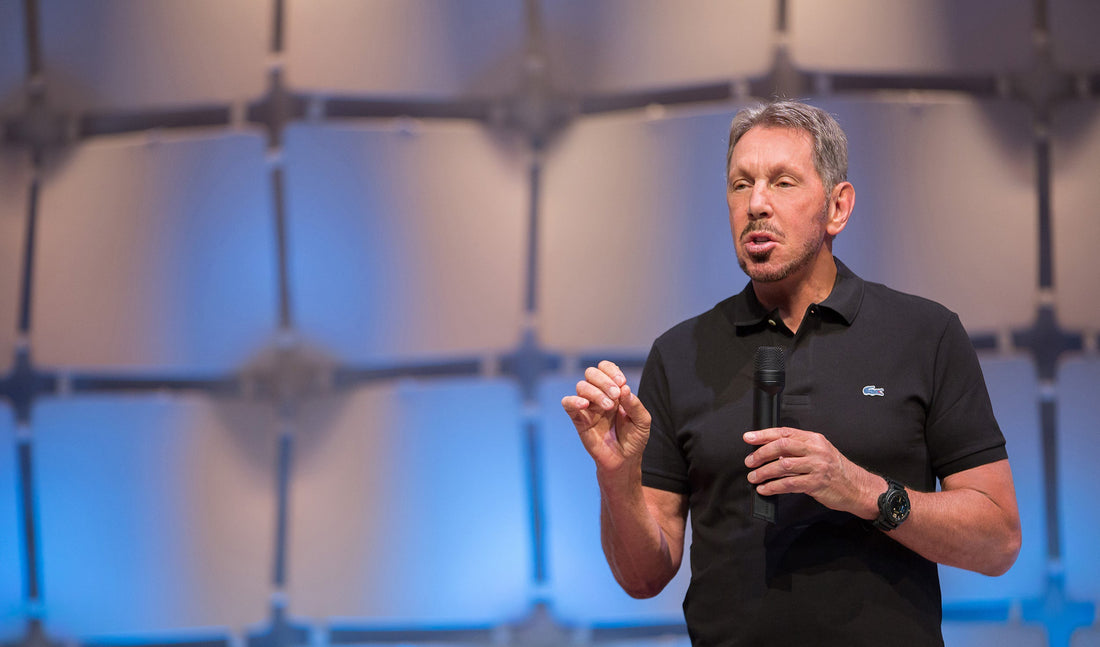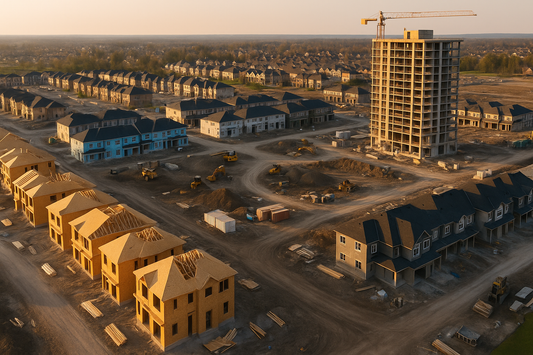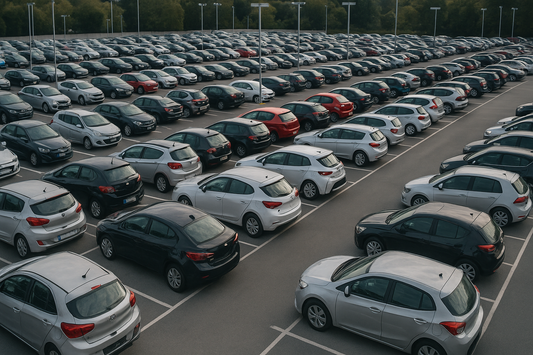Oracle’s $300B AI Bet: How Larry Ellison and OpenAI Just Reshaped the Future of Cloud, Chips, and Security
Oracle’s record-breaking $300B deal with OpenAI isn’t just about compute power — it’s about rewriting the future of cloud, AI, and security. From Larry Ellison’s wild ride since 1977 to Oracle’s bold bet on Project Stargate, this is the biggest story in tech.

Introduction
In September 2025, Oracle shocked Wall Street — and the entire tech world — with a $300 billion, five-year deal with OpenAI to build 4.5 gigawatts of AI-ready data centers starting in 2027. The news sent Oracle stock soaring nearly 40% overnight, briefly making Larry Ellison the richest man on Earth and pushing Oracle toward the $1 trillion club.
For context, this single deal is larger than the GDP of Finland and nearly triple the entire annual IT budgets of Fortune 500 companies combined. It positions Oracle — a company often dismissed as a “legacy database vendor” — as a new heavyweight in the AI infrastructure arms race, alongside Microsoft Azure, Amazon AWS, Google Cloud, and Nvidia.
But this didn’t come out of nowhere. Oracle’s journey stretches back to 1977, when Ellison and co-founders Bob Miner and Ed Oates launched what would become the world’s most dominant relational database. Over decades, Oracle has fought rivals like IBM, Sybase, Microsoft, SAP, and Salesforce — and reinvented itself through bold bets like the Sun Microsystems acquisition (2010) and now, the Project Stargate mega-contract.
This blog unpacks:
-
The OpenAI–Oracle deal and why it matters.
-
A short history of Oracle and Larry Ellison’s empire.
-
The industry impact across brands like Microsoft, AWS, Google, and Nvidia.
-
The risks, challenges, and opportunities of scaling 4.5 GW of AI compute.
-
How Oracle’s bold move affects security, surveillance, and ArcadianAI’s mission in cloud-native intelligence.
Quick Summary / Key Takeaways
-
Oracle signed a $300B deal with OpenAI for AI compute.
-
Stock surged nearly 40%, Ellison briefly richest person alive.
-
Project includes 4.5 GW data centers — one of the largest ever.
-
Impacts Microsoft, AWS, Google, Nvidia, Meta, xAI directly.
-
Reinforces that AI infrastructure = the new oil.
Background & Relevance
Why does this matter now?
-
AI demand is exploding: Goldman Sachs estimates global AI investment will reach $1 trillion by 2030, with infrastructure the single largest category.
-
Energy demand is skyrocketing: AI data centers are projected to consume 10% of U.S. electricity by 2030 (IEA, 2025).
-
Security & sovereignty: Governments from Washington to Brussels are treating AI infrastructure as a matter of national security, not just commerce.
Oracle, once seen as a “sleepy database giant,” just repositioned itself at the core of this global race.
Core Topic Exploration
What Is Project Stargate?
-
OpenAI, with Oracle as its backbone, plans to build mega-scale compute clusters across North America, Europe, and Asia.
-
Phase I: 4.5 GW data centers starting 2027.
-
Phase II: Expand beyond 10 GW by early 2030s.
-
Partners include SoftBank, Nvidia, G42, and global utilities.
This is not just cloud — it’s civilization-scale infrastructure.
Oracle vs. Microsoft Azure
-
Microsoft invested $13B in OpenAI and powers ChatGPT via Azure.
-
OpenAI now diversifies to Oracle to avoid dependency.
-
Oracle gains credibility as the second backbone of AI compute.
For enterprise CIOs, this means Oracle is no longer optional — it’s a must-evaluate AI infrastructure vendor.
Oracle vs. AWS
-
AWS remains the cloud market leader (31% share, Synergy Research 2025).
-
But AWS lacks a flagship AI partner on OpenAI’s scale.
-
Oracle’s win here positions it as the “dark horse” — leveraging Ellison’s empire to compete head-on.
Oracle vs. Google Cloud
-
Google leads in AI research (DeepMind, Gemini) but trails in big enterprise contracts.
-
Oracle leapfrogged with one announcement, highlighting how contracts, not just models, shape market power.
The Nvidia Angle
-
Oracle’s expansion guarantees tens of billions in GPU purchases from Nvidia.
-
Nvidia CEO Jensen Huang calls it the “largest GPU order in history.”
-
Oracle may also hedge with AMD Instinct MI300X and custom silicon.
Security & Surveillance Impact
AI infrastructure isn’t just about LLMs — it underpins:
-
Adaptive video surveillance (ArcadianAI, Verkada, Genetec, Milestone).
-
Smart city platforms (Cisco, Huawei, Palantir).
-
Defense AI (Anduril, Palantir, Lockheed Martin).
The Oracle–OpenAI deal accelerates real-time, high-scale video intelligence — directly aligning with ArcadianAI’s mission: camera-agnostic, adaptive AI at scale.
Comparisons & Use Cases
Competitive Comparison Table
| Vendor | Strengths | Weaknesses | Impact of Oracle Deal |
|---|---|---|---|
| Oracle | Databases, enterprise contracts, now AI infra scale | Late to cloud, brand perception | Catapulted into AI’s top tier |
| Microsoft Azure | OpenAI equity, Azure AI stack | Dependency risk, high costs | Must double down on exclusivity |
| AWS | Scale, ecosystem | No OpenAI-level partner | Forced to chase new mega-deals |
| Google Cloud | Research, ML ops | Enterprise traction weaker | Needs big enterprise anchors |
| Nvidia | Hardware dominance | Supply bottlenecks | Biggest beneficiary of Oracle deal |
Common Questions (FAQ)
Q1: Why did OpenAI choose Oracle?
To diversify beyond Microsoft Azure, secure guaranteed capacity, and leverage Oracle’s willingness to build at unprecedented scale.
Q2: How big is 4.5 GW of data centers?
Equivalent to powering 4.5 million U.S. homes — among the largest energy projects in history.
Q3: Does this make Oracle bigger than AWS or Azure?
Not yet. But it gives Oracle a seat at the AI Big Four table.
Q4: What does this mean for security companies?
More affordable, scalable AI compute → better real-time video analytics, reduced false alarms, smarter surveillance.
Q5: Is this risky for Oracle?
Yes. If AI demand slows or energy costs spike, Oracle could face overcapacity.
Conclusion & CTA
Oracle’s $300B OpenAI deal is more than a contract — it’s a strategic shockwave. It cements AI infrastructure as the new oil, and places Oracle back in the center of global technology debates.
For ArcadianAI, it proves the thesis: adaptive AI + scalable cloud beats static surveillance every time.
Security Glossary (2025 Edition)
-
AI Infrastructure — Data centers, chips, and networks powering large-scale AI models.
-
AWS (Amazon Web Services) — World’s largest cloud provider, key Oracle rival.
-
Azure — Microsoft’s cloud platform, OpenAI’s original backbone.
-
Ellison, Larry — Oracle’s co-founder, CTO, and visionary leader since 1977.
-
Gigawatt (GW) — Unit of power; 1 GW powers ~1 million U.S. homes.
-
Nvidia — Dominant supplier of GPUs used in AI training and inference.
-
OpenAI — Creator of ChatGPT, partner in $300B Oracle deal.
-
Project Stargate — Codename for OpenAI’s global AI infrastructure expansion.
-
Surveillance AI — Intelligent video analysis to detect threats and anomalies.
-
VSaaS (Video Surveillance as a Service) — Cloud-based video monitoring platforms (e.g., ArcadianAI, Verkada).

Security is like insurance—until you need it, you don’t think about it.
But when something goes wrong? Break-ins, theft, liability claims—suddenly, it’s all you think about.
ArcadianAI upgrades your security to the AI era—no new hardware, no sky-high costs, just smart protection that works.
→ Stop security incidents before they happen
→ Cut security costs without cutting corners
→ Run your business without the worry
Because the best security isn’t reactive—it’s proactive.







